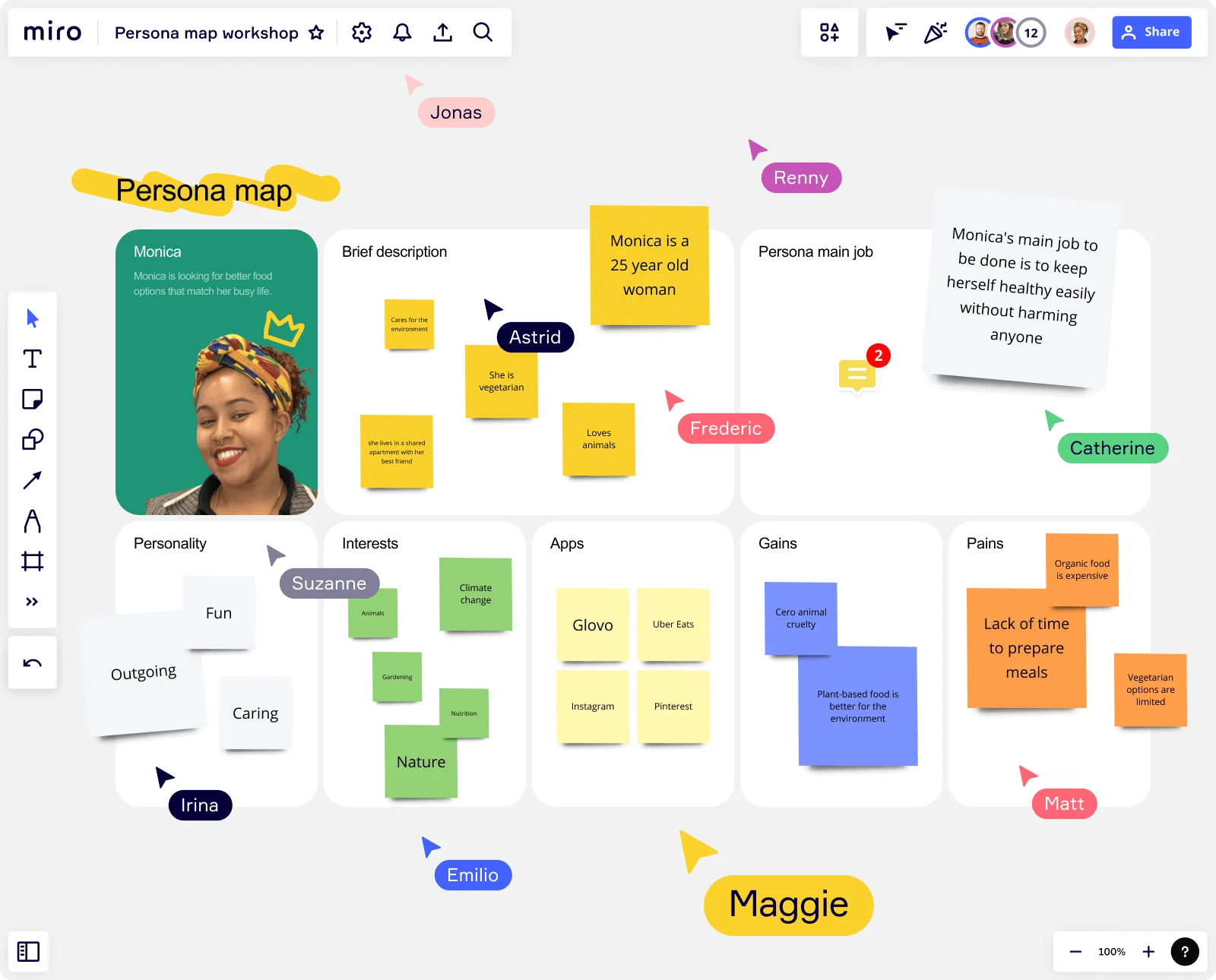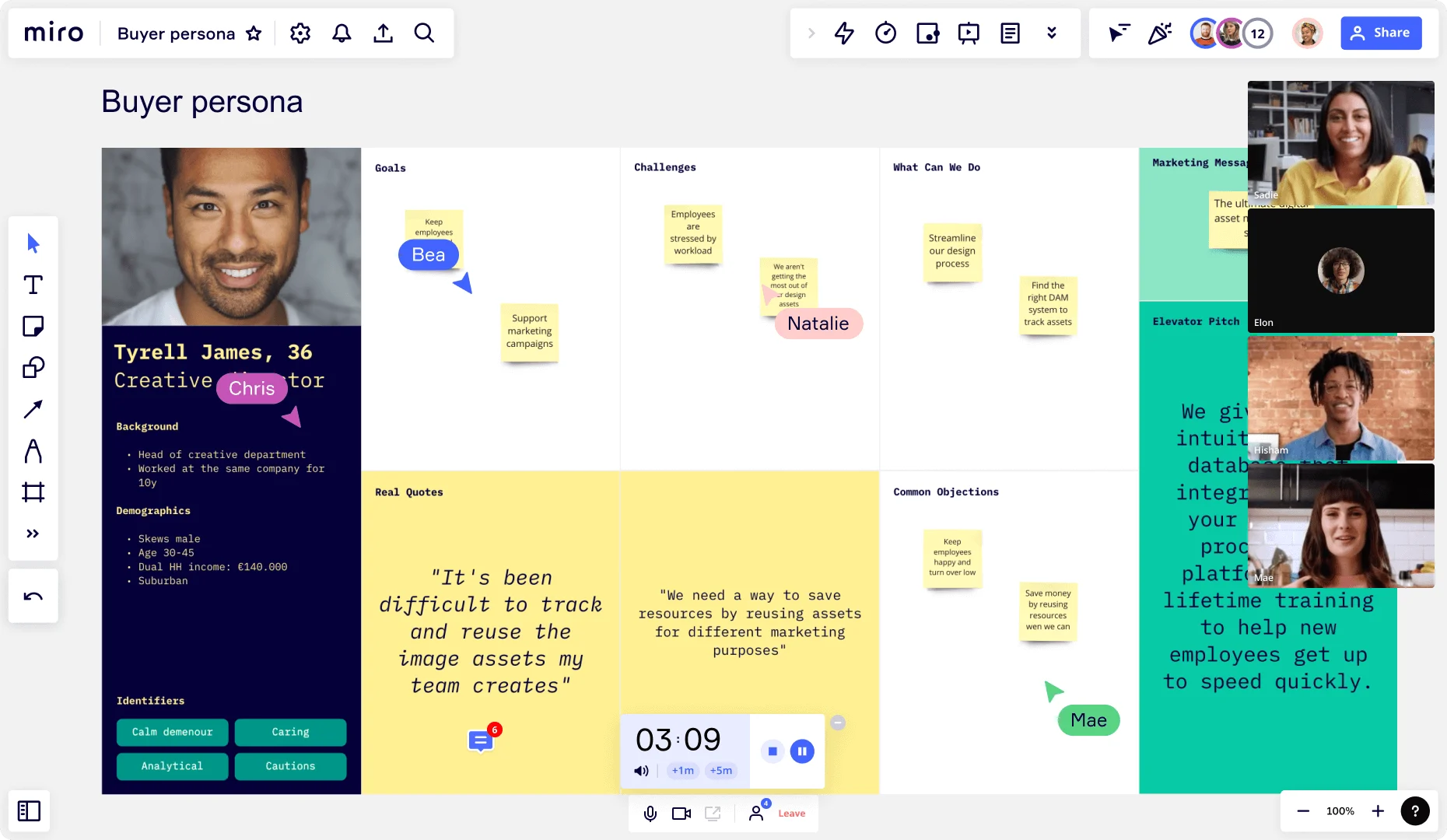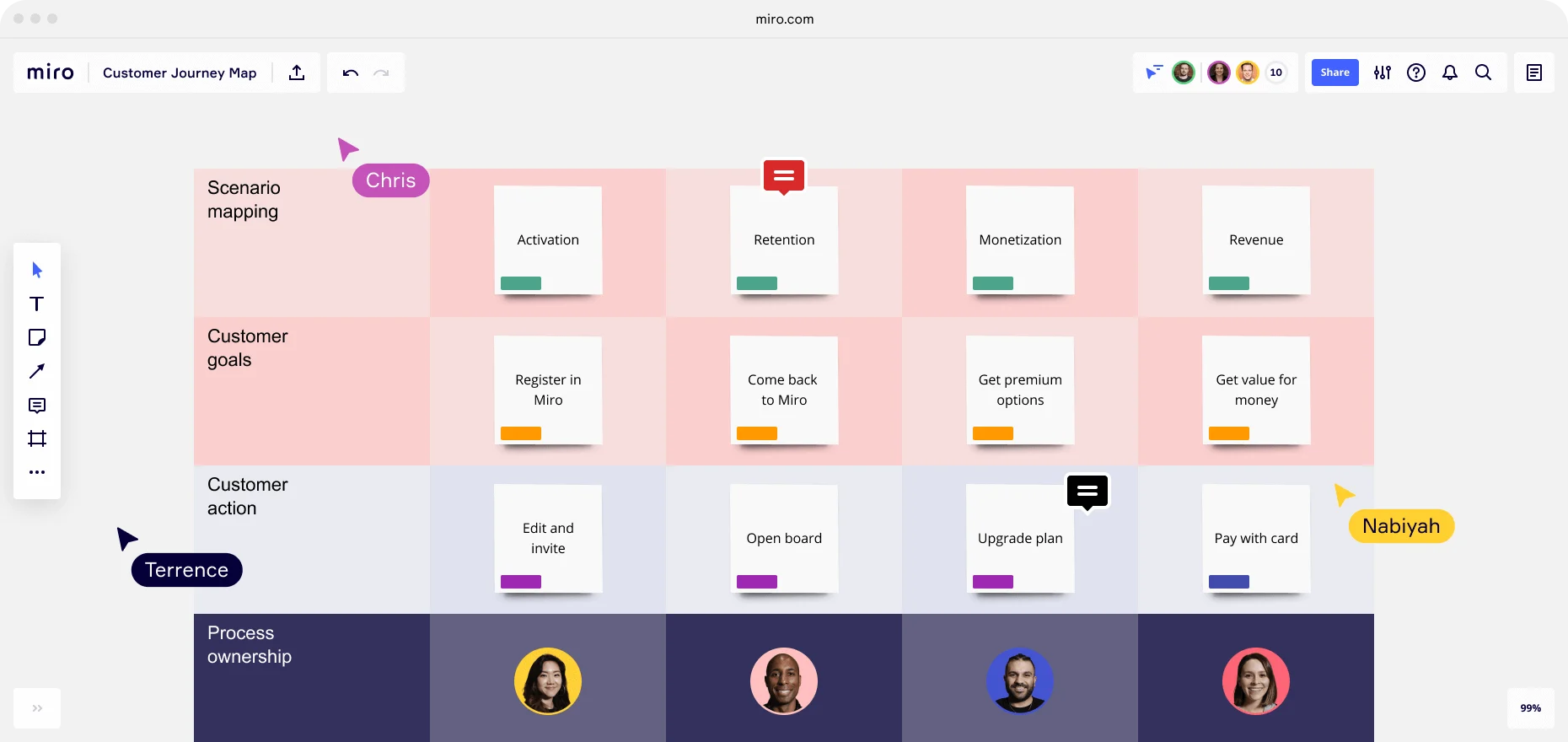
Table of contents
Table of contents
How to run a persona workshop

Introduction to persona workshops
Running a persona workshop is a valuable exercise for gaining a deep understanding of your target users and their needs. By creating user personas, you can develop empathy for your audience and make informed decisions throughout the product development process.
Importance of understanding user personas
Understanding user personas is crucial for creating products and services that effectively meet the needs and preferences of your target audience. Personas are fictional representations of your typical users, based on research and data analysis. They help you develop a clear picture of who your users are, what motivates them, and what challenges they face.
By uncovering user personas, you gain valuable insights into your users' goals, behaviors, and expectations. This knowledge allows you to tailor your products and services to address their specific needs and pain points. Ultimately, understanding user personas leads to better user experiences, improved customer satisfaction, and increased business success.
Overview of persona workshops
Persona workshops are collaborative sessions that bring together cross-functional teams to create and refine user personas. These workshops provide a structured framework for gathering insights, analyzing data, and developing a deep understanding of your target audience.
The main goals of a persona workshop include:
Creating shared empathy
Persona workshops foster empathy by encouraging participants to put themselves in the shoes of the users they are designing for. This shared understanding helps align the team and promotes user-centered decision-making.
Building a comprehensive view
Persona workshops allow you to gather diverse perspectives and knowledge from different team members. By pooling together insights and expertise, you can create robust and well-rounded user personas.
Aligning stakeholders
Persona workshops serve as a platform for aligning stakeholders across different departments or teams. By involving representatives from various areas, such as marketing, design, and development, you ensure that everyone shares a common understanding of the users and their needs.
During a persona workshop, you will engage in various activities and exercises to develop user personas collaboratively. These activities may include icebreaker exercises, persona creation exercises, group discussions, and analysis sessions. The ultimate goal is to refine and finalize user personas that accurately represent your target audience.

Preparing for the persona workshop
Before diving into a persona workshop, it is crucial to adequately prepare to ensure a productive and successful session. You can get some help and a solid starting point with Miro's persona templates, which provide a structured framework to define user personas effectively.
Define the goals and objectives
To begin, clearly define the goals and objectives of the persona workshop. What specific outcomes do you hope to achieve? Are you aiming to develop user personas from scratch, refine existing personas, or gain a deeper understanding of your target audience? Defining these goals will guide the entire workshop process and help structure the activities and discussions.
Collect participants’ ideas and suggestions onto online sticky notes, so you can collaboratively outline and organize the workshop's purpose, ensuring that everyone is aligned and has a clear understanding of the intended outcomes.
Assemble a diverse team
Next, assemble a diverse team of participants who will contribute their unique perspectives and expertise during the persona workshop. Consider including individuals from different departments, such as marketing, design, development, customer support, and product management. The varied backgrounds and skill sets will enrich the discussions and help create well-rounded personas.
Gather relevant data and research
To develop accurate and insightful personas, it is essential to gather relevant data and research about your target audience. This can include quantitative data from analytics platforms, qualitative insights from user interviews, surveys, and ethnographic research, as well as market research and competitor analysis.
Create a workshop agenda
Developing a clear and structured workshop agenda is vital to keep the session focused and ensure that all necessary topics are covered. The agenda should include time allocations for each activity, breaks, and discussions. It is essential to strike a balance between providing enough structure and allowing flexibility for open discussions and exploration.
Conducting the persona workshop
Once you have adequately prepared for the persona workshop, it's time to dive into the actual session.
Icebreaker activities
Icebreaker games are essential to set a positive and engaging tone for the persona workshop. They help break the ice, establish rapport among participants, and create a comfortable environment for collaboration. Icebreakers can also encourage creativity and energize the team before diving into the more focused activities.
Persona creation exercises
Persona creation exercises are at the core of the workshop, where you collaborate as a team to develop detailed and accurate user personas. These exercises involve analyzing research data, identifying patterns and insights, and synthesizing the information into cohesive personas.
During the persona creation exercises, consider the following steps:
Review research findings: Begin by sharing and discussing the research findings and data collected. Look for commonalities, trends, and notable user behaviors or preferences.
Identify user segments: Based on the research data, identify distinct user segments or groups. These segments can be defined by demographics, psychographics, goals, or behaviors.
Craft persona profiles: For each user segment, create a persona profile that encapsulates the key characteristics, motivations, goals, and challenges of that group. Give each persona a name, photo, and descriptive details to make them feel more real and relatable.
Collaborative persona development
Collaboration is a vital aspect of the workshop, as it harnesses the collective knowledge and expertise of the team. This exercise involves group discussions, brainstorming, and consensus-building to refine and finalize the persona profiles.
During the collaborative persona development exercise, consider the following steps:
Present individual personas: Each team member presents the persona they have individually created, explaining the rationale behind their choices and highlighting key insights.
Compare and consolidate personas: Compare the individual personas and identify commonalities and overlaps. Look for patterns, recurring themes, and shared characteristics. Consolidate similar personas to avoid duplication and create a manageable set.
Validate and refine personas: Engage in a discussion to validate and refine the consolidated personas. Consider the input and perspectives of each team member, seeking consensus on the persona attributes and details.
Empathy mapping
Empathy mapping is a powerful exercise that helps teams develop a deep understanding of their users' thoughts, emotions, needs, and behaviors. It allows participants to step into the shoes of the user personas and gain empathy for their experiences.
During the empathy mapping exercise, consider the following steps:
Assign a persona: Assign each team member a specific persona to focus on during the exercise.
Identify user actions: Brainstorm and document the actions and behaviors the persona might engage in while interacting with your product or service. These actions can be related to research, purchasing decisions, or product usage.
Explore feelings and emotions: Discuss and capture the persona's feelings, emotions, and attitudes at different stages of their interaction journey. Consider their frustrations, motivations, joys, and fears.
Define needs and insights: Identify the underlying needs, desires, and goals that drive the persona's actions and emotions. Extract key insights from the empathy mapping exercise.
Miro's Empathy Map templates provides a structured framework for conducting empathy mapping activities, allowing team members to collaboratively fill in the details for each persona.

Customer journey mapping
Customer journey mapping is an exercise that visualizes the end-to-end experience of the persona when interacting with your product or service. It helps identify pain points, opportunities, and touchpoints throughout the user's journey, enabling you to create a more seamless and satisfying user experience.
During the journey mapping exercise, consider the following steps:
Define key touchpoints: Identify the key touchpoints or stages of the user's journey, starting from the initial awareness of your product/service to the final post-purchase experience.
Document actions and emotions: For each touchpoint, document the user's actions, thoughts, emotions, and pain points. Consider what the user is trying to accomplish at each stage and the challenges they may encounter.
Identify improvements: Analyze the journey and identify areas for improvement or opportunities to enhance the user experience. Brainstorm ideas to address pain points, streamline processes, or add value at different touchpoints.

Group discussions and analysis
Throughout the persona workshop, group discussions and analysis sessions play a crucial role in synthesizing insights, identifying patterns, and generating new ideas. These discussions allow team members to share their perspectives, challenge assumptions, and collectively make sense of the gathered information.
Use these discussions to share research findings, analyze patterns and themes, and discuss implications and opportunities.
Extracting key insights
Round off the persona workshop by synthesizing key insights. These insights provide valuable direction and serve as a foundation for designing user-centric solutions, and can be used to guide product/service development decisions
Use Miro to run a persona workshop
Running a persona workshop is a valuable endeavor for gaining a deep understanding of your target users and their needs. The most effective workshops are engaging and collaborative.
Miro's real-time collaboration features enable team members to contribute, visualize data, and collectively refine personas and insights. Sign up for free to take your workshop to the next level.